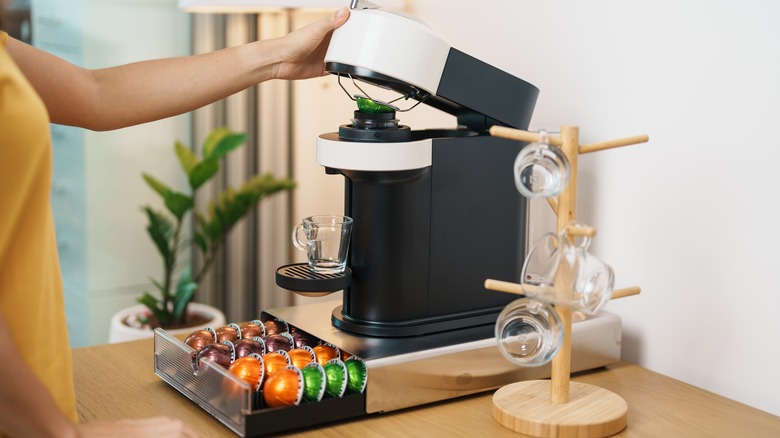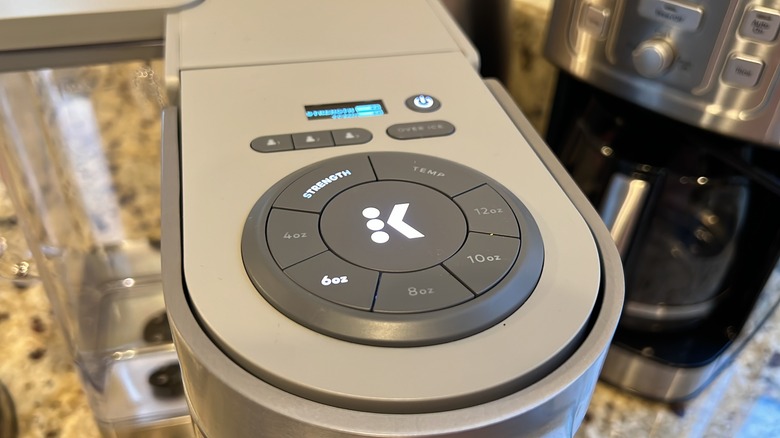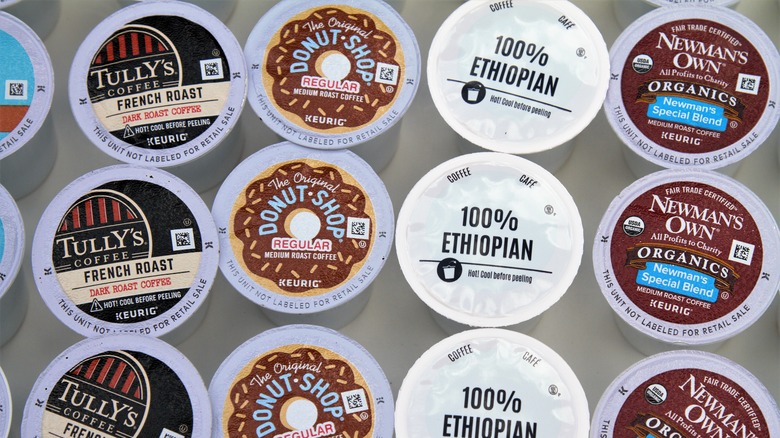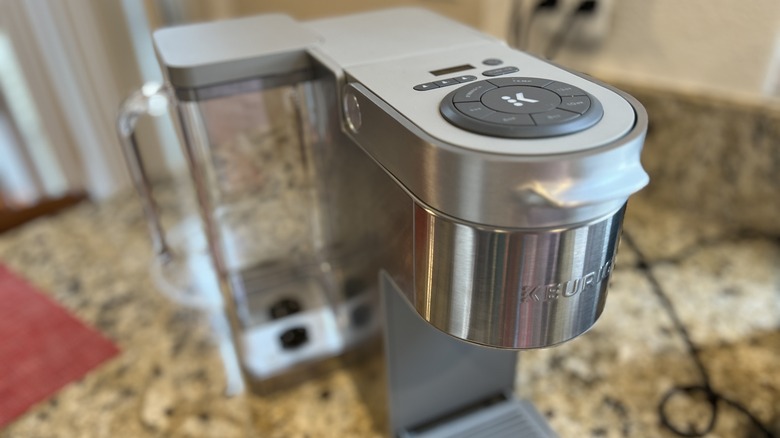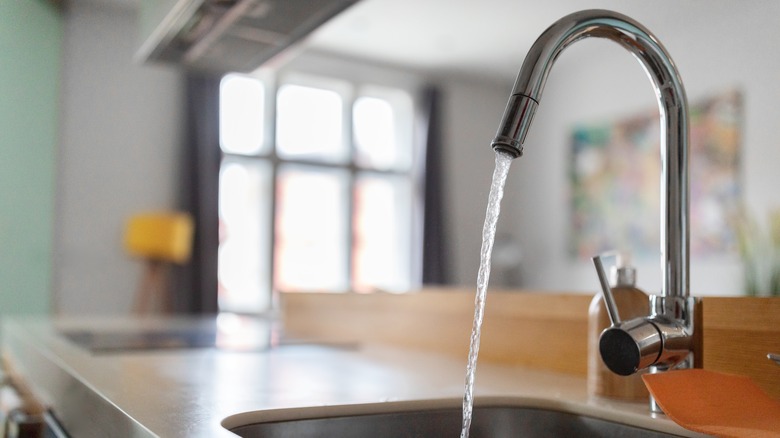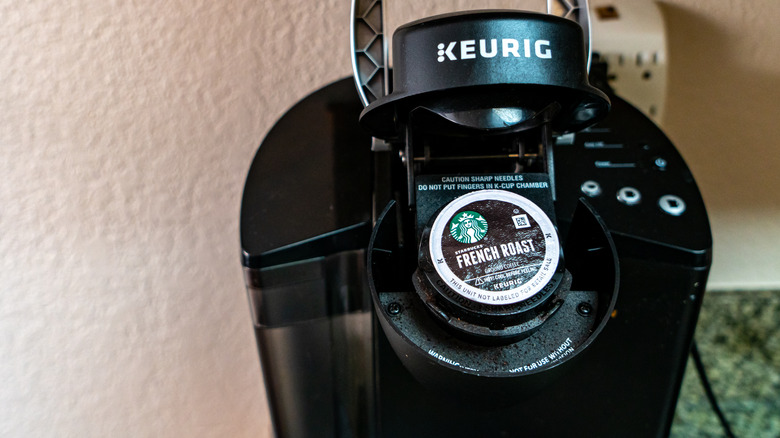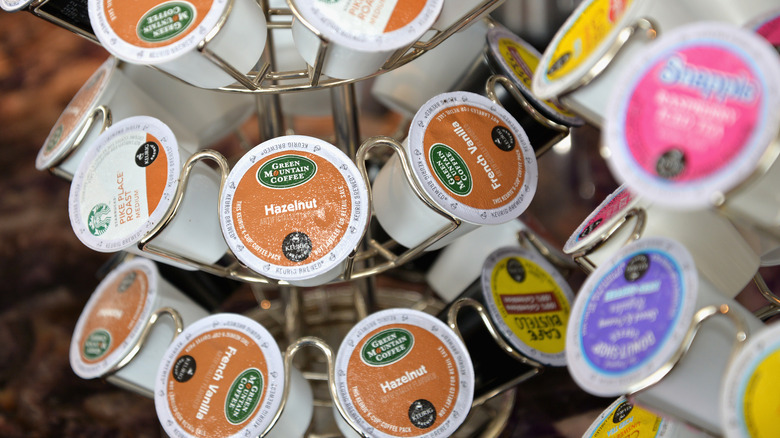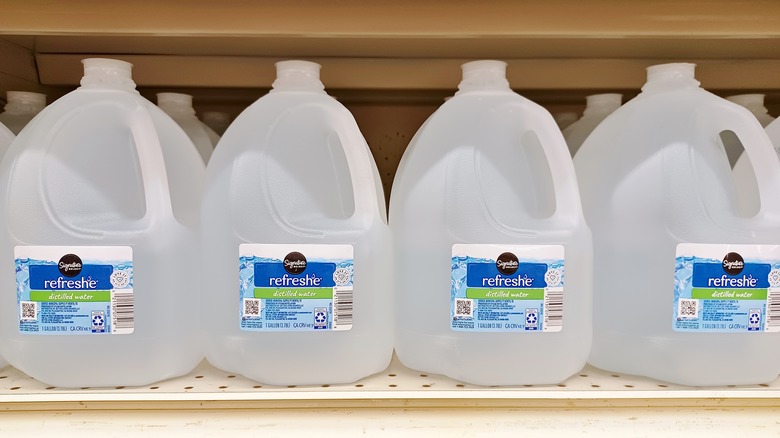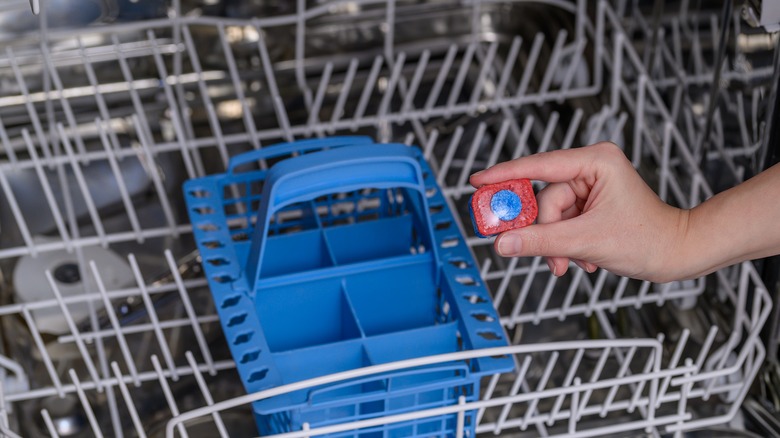These 9 Mistakes Are Shortening The Lifespan Of Your Keurig
We may receive a commission on purchases made from links.
Since its release more than 20 years ago, Keurig has taken the coffee brewing world by storm. In fact, Keurig's reports have shown that the systems are now in around 40 million homes across the country. Part of why they have become so popular is that they're easy to use and maintain. Because of that, many Keurig owners have developed a set-it-and-forget-it mindset when it comes to these coffee makers.
However, if you're not mindful of the way you use your coffee maker, you could be doing (or not doing) things that could ultimately shorten the machine's lifespan. Thankfully, it may not be too late to give your Keurig the TLC it needs and deserves. If you want to make your coffee maker last and ensure that it remains a staple on your counter for many years to come, here are some mistakes you'll want to avoid making.
Leaving your machine on all the time
If you make coffee or tea every day, you may be tempted to leave your Keurig on all the time. After all, who doesn't want to shave off a few seconds when they're trying to rush out of the door in the morning? Unfortunately, leaving your machine on might actually be causing more harm than good. This can lead to wear and tear over time because the heating element is constantly working to keep the water warm. For that reason, Keurig recommends turning your coffee maker off when it's not in use.
Fortunately, many Keurigs have an auto-off feature that will turn the coffee maker off if it hasn't been used after a certain amount of time. If your Keurig has this option, you can explore the settings to select an amount of time that works for you. For example, people who make several cups of coffee in the morning may want to have their Keurigs stay on longer than people who only make one cup per day.
Leaving pods in your Keurig
Most people who own a Keurig are probably guilty of leaving already-brewed pods in the machine every once in a while. In fact, some people may even be in the habit of leaving an old pod until they're ready to use a new one. On the surface, this may seem like a perfectly harmless thing to do; however, the reality is that this can shorten its lifespan, meaning it won't be as long before you have to replace your Keurig.
Not removing pods in your Keurig after they've been brewed could cause mold and bacteria to grow. Not only can this impact the quality and taste of your coffee, but not cleaning mold build-up can make it harder for your machine to function, which can result in it not lasting as long. While it's true that drinking a moldy beverage might not cause life-threatening complications, it can lead to several unpleasant symptoms, such as stomach pain, nausea, diarrhea, and vomiting.
Not descaling your Keurig
Wiping down your Keurig might already be a part of your regular routine. But, if you want to keep your coffee maker running smoothly for as long as possible, a simple wipe-down and rinse isn't going to cut it. In order to thoroughly clean your Keurig, you need to descale it. Descaling is a term used for removing mineral build-up from coffee machines. To do this, simply pour white vinegar into the water reservoir until it's half full. Then add room temperature water to the reservoir's maximum fill line. Place a mug under your Keurig and repeatedly brew and dump cups until the water reservoir is empty. Once you're done descaling, fill the reservoir with water and run a few brew cycles to ensure all of the vinegar has been rinsed out. You can also purchase Keurig's Brewer Cleaner, and follow the instructions on the bottle.
When Keurigs aren't properly descaled, the mineral and grime build-up can cause clogs in the device, which can make it harder for it to function. Over time, this can negatively impact your Keurig's lifespan by putting extra strain on the heating element and other internal components. Now that you know the importance of descaling, you're probably wondering how often you should do it. Keurig suggests every three months on average.
Using tap water
Tap water is the go-to option for many Keurig owners. It's easily accessible and super low-cost to use. The bad news, however, is that tap water can actually be harmful to your Keurig because it contains many minerals, like calcium and sodium, that can cause build-up that leads to clogs. In fact, tap water can also cause clogs in other appliances in your home, such as ice makers.
Instead, Keurig recommends using bottled or filtered water for the best results. Not only can this extend your machine's lifespan, but it can also improve the taste of your coffee. In addition to putting wear and tear on your Keurig, some of the minerals in tap water, such as chlorine, can leave your coffee tasting a little off.
Not cleaning the needle regularly
Cleaning your Keurig's needle may have never crossed your mind before, but that's about to change. While a dirty needle may not necessarily impact the entire machine, continuously using your machine and not cleaning the needle can cause your Keurig to clog. Specifically, a buildup of coffee grounds will get stuck inside the needle, creating inconsistent cups of coffee since it will disrupt the continuous flow of water through the pod. This will make some taste too strong while others too weak, making you wonder if you need to replace your machine. On top of that, an unclean needle can be a breeding ground for bacteria and can also throw off the taste of your coffee.
Luckily, cleaning the needle is a pretty straightforward process. All you need to do is turn your Keurig off, unplug it, and grab a clean paper clip. Remove the pod holder and use the paper clip to remove any debris from the tube. Then, gently rub the paper clip around the needle to remove any gunk. Please keep in mind that the needle is sharp, so it's important to be careful when cleaning it. You can also order a Keurig 2.0 Needle Cleaning Tool, which makes this process even easier.
Forgetting to change the water filter
If you read this and thought, "What water filter?!" you aren't alone. Since Keurig machines don't work exactly like traditional coffee makers, some people may be under the impression that they don't have filters. That isn't the case, however. Many newer models have water filters that help remove minerals from your water. Not replacing your Keurig's water filter can reduce its performance by impacting water pressure and potentially causing clogs.
If your Keurig has a water filter, you should change it every three months to help keep your machine working its best and to keep your coffee tasting fresh. Please note that Keurigs don't need water filters to function. If remembering to change the water filter regularly sounds like too much of a hassle, keep in mind that you can just use filtered water instead.
Not running rinse cycles, especially after sweetened pods
Have you ever brewed a fresh cup of coffee or tea in your Keurig only to take a sip and realize that it tastes a little like the hot chocolate you made the night before? Thankfully, you can help prevent that from happening again by running regular rinse cycles. In addition to helping eliminate flavor transfers, rinse cycles can also assist in maintaining the overall functionality of your coffee maker.
You can run a rinse cycle on your Keurig by placing a cup under the machine, leaving the pod holder empty, and pressing the brew button. You may need to do this a couple of times until the water is completely clear. You can also use Keurig's Rinse Pods to eliminate residue. If you make a lot of sweetened or heavily flavored drinks, you may need to run rinse cycles more often.
Using softened or distilled water
Tap isn't the only kind of water that isn't recommended for your Keurig. While softened or distilled water may seem like great alternatives, they actually aren't. Keurig notes that these types of water can clog your needle and lead to issues with the extraction process. In the long run, this could result in your Keurig not lasting as long as it could. According to Keurig, these kinds of water can also change the flavor of your coffee — and not in a good way.
As mentioned earlier, bottled or filtered water is the best option. If you're using distilled or softened water and receive an error message while brewing, the water could be the cause. In that case, it is recommended to clean the needle and run a couple of brews without a pod in the coffee maker.
Placing removable parts in the dishwasher
When you have a dishwasher, it's hard to resist the temptation of throwing every dish and kitchen utensil inside. However, when it comes to your beloved Keurig, this is something you'll definitely want to avoid. Putting any removable parts into the dishwasher could seriously impact the machine's lifespan. In fact, some of the parts may not even make it through a cycle in the dishwasher.
While it's already been noted that keeping your Keurig clean is a must for optimal function, none of the machine's removal parts are dishwasher-safe. Instead, you'll have to clean these parts the old-fashioned way: by hand with soap and warm water. Even though this method may take a little longer, it'll be worth it in the long run when your Keurig is clean and working properly for years to come.
